Charging and Locking
The built-in smart electronic lock detects the vehicle through magnetic sensing and automatically secures it upon docking, while the charging station (with an integrated charger) automatically charges the electric scooter or e-bike.
Working Principle
-Unlocking & Billing Start
After scanning the QR code(Vehicle-side), the scooter or e-bike is automatically unlocked from the charging station. The user can then simply pull the vehicle out without additional steps.
-Docking & Billing End
Upon docking, the charging station automatically detects the vehicle, lock it, initiates charging, and ends the billing without needing separate commands from the backend.
-Charge Management
- The male pins (station side) physically engage with the female terminal(vehicle side) to establish power transfer. Charging begins immediately upon mechanical connection, requiring no IoT handshake.
- The charging station will automatically stop charging once the battery is fully charged. However, due to the real-time power consumption of the IoT system, it continuously monitors the battery level and will resume charging if it drops below 85%.
Communication and Control
Unlocking is controlled by the vehicle’s onboard IoT. Communication between the station and vehicle IoT is via: RS485 or CAN. The charging station has no integrated master IoT. A station-side master IoT module is an optional feature for applications requiring remote monitoring, OTA updates, or fleet management.
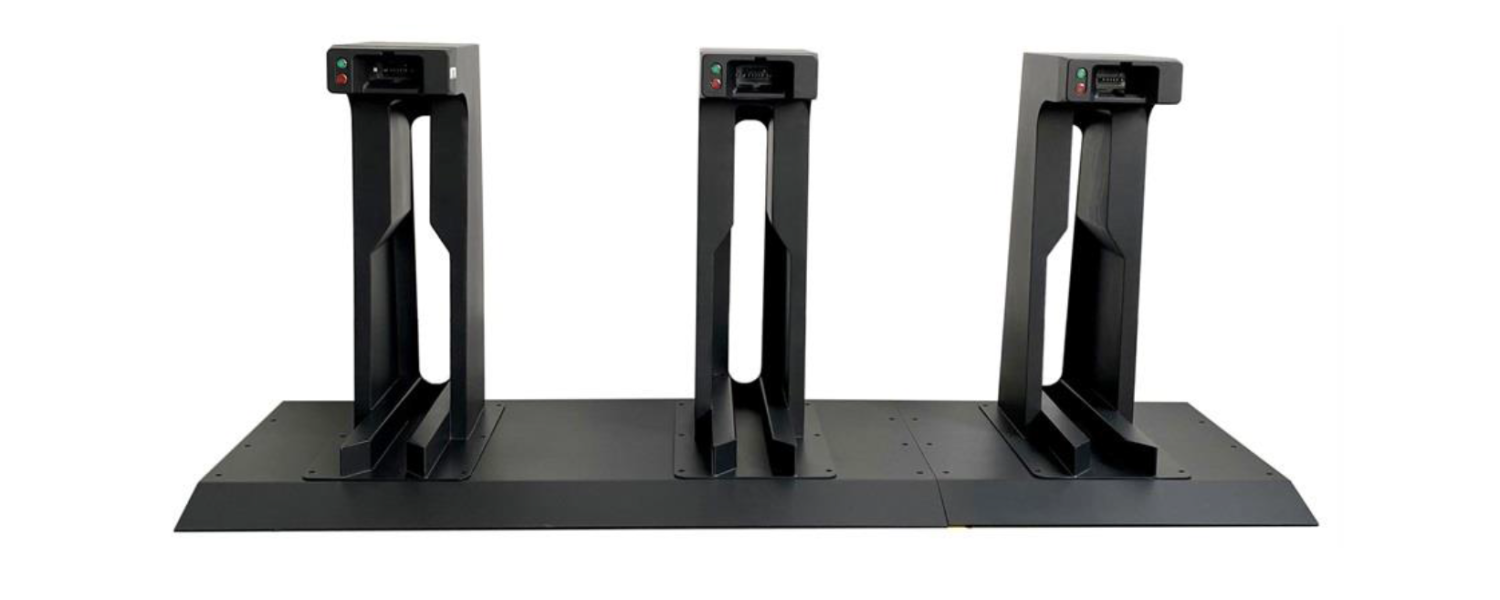
Compatibility
Custom integration solutions can be provided for third-party brands of shared electric bicycles, shared e-scooters, and non-electric bicycles(pedal bikes).
Expandability
The charging station is designed for modular scalability, allowing multiple charging docks to be installed in parallel along a single power source. The maximum number of units supported depends on the input voltage, the amperage rating of the power plug or socket, and the charger specifications, enabling flexible system expansion based on power infrastructure and deployment needs.
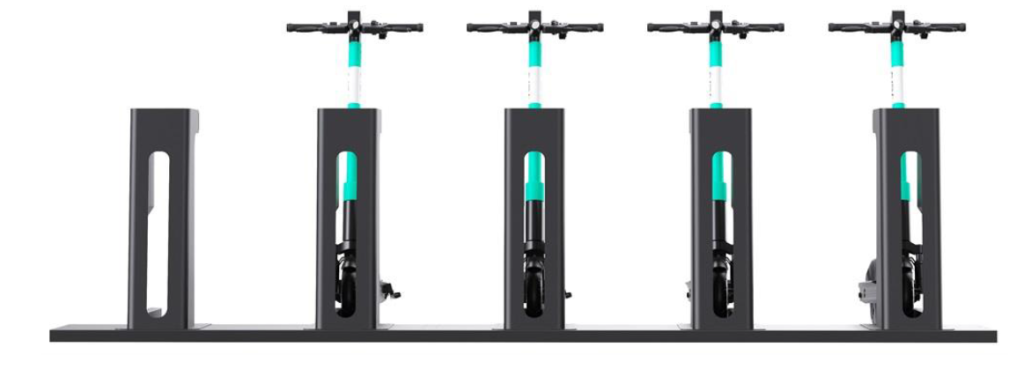
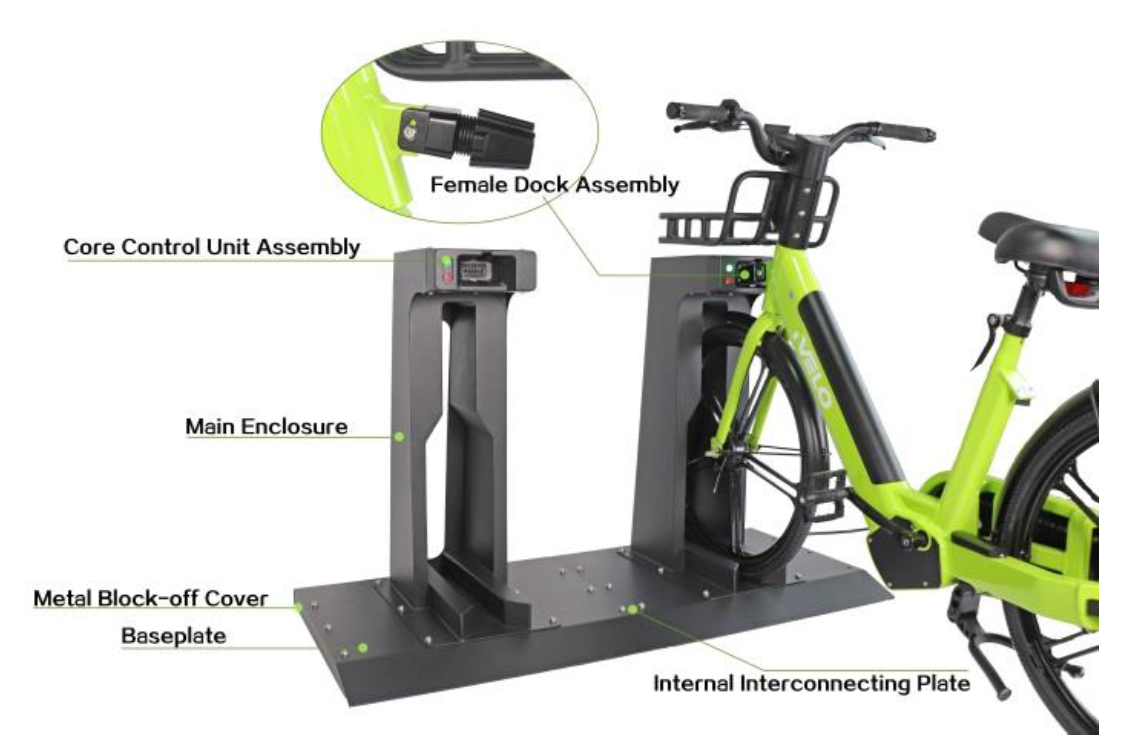
Main Components
The main enclosure is the metal structural of the charging station. It houses the charger, core control unit assembly, and sub power cable, and provides mechanical support for the docking mechanism. Coating Process: Electrophoretic deposition + Powder coating for enhanced corrosion resistance and durability.
Charging Station Specification
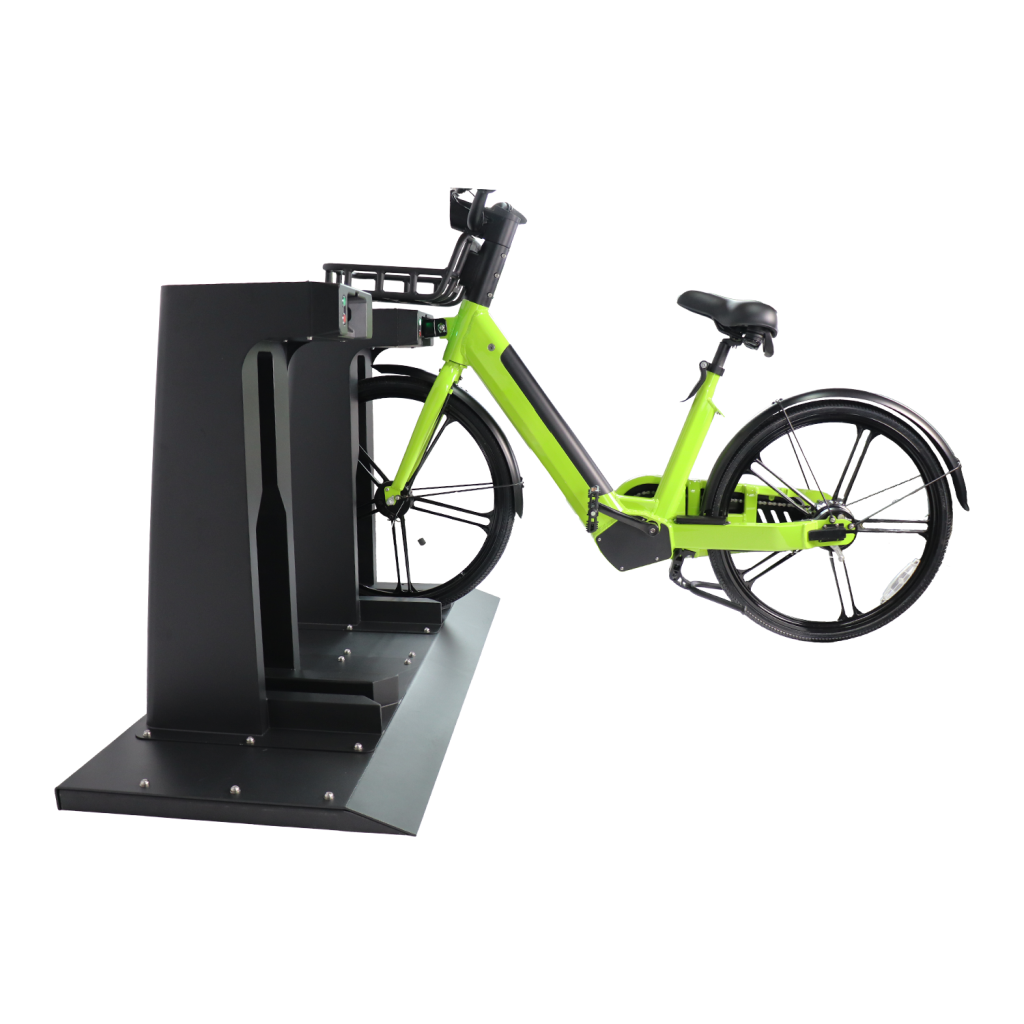
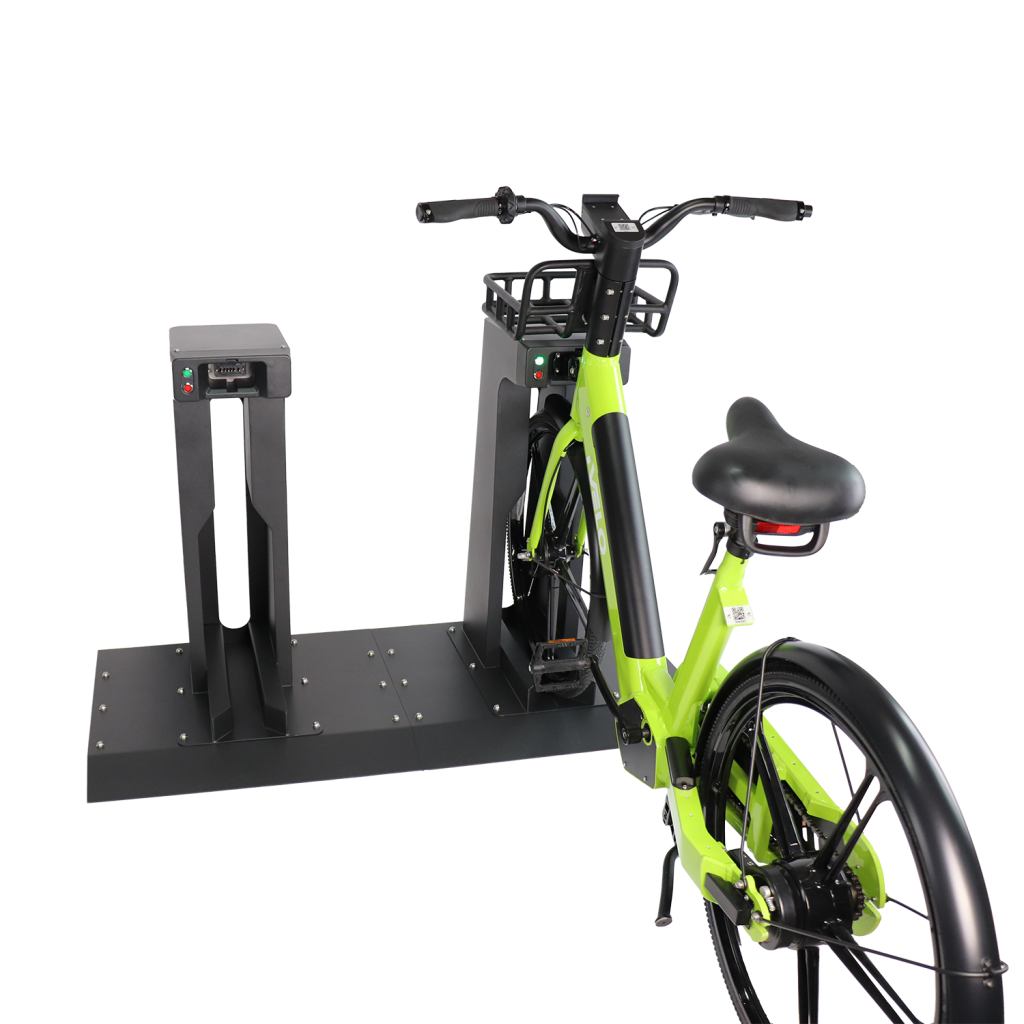
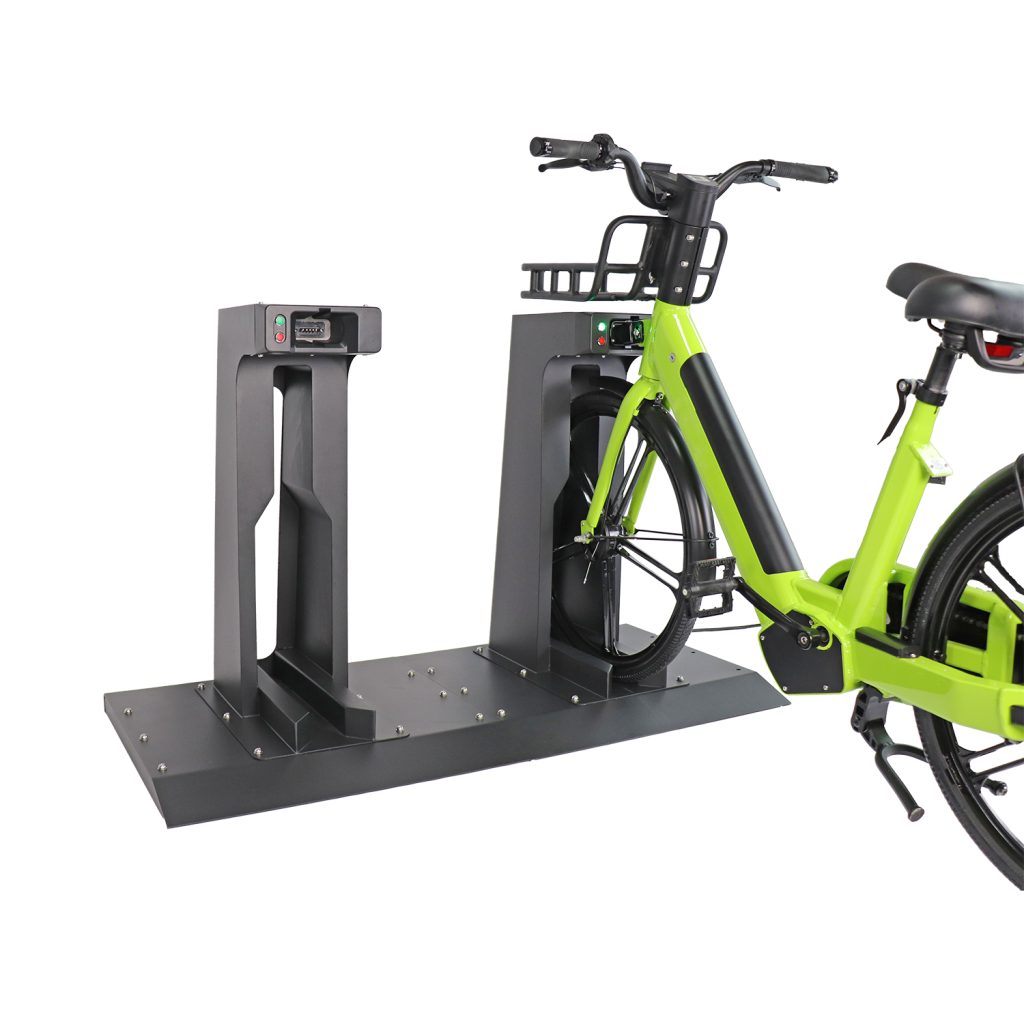

FAQ
ask us
anything
If I want to run a rental business in a closed park, and I do not have my own app, is it feasible for users to unlock them through an RFID card?
*Yes, it is possible. We have supported similar cases before. However, we
do not supply the control board or card reader for RFID cards. You will need to develop these features independently. We can provide the communication protocol between the controller and the IoT module, as well as between the IoT and the charging station.
Is this a universal charging station?
*No. The core components of our charging station are designed based on the dimensions of our scooter and e-bike poles, using a proprietary design. It cannot be mounted on other vehicles without modifications, and there are additional compatibility limitations involving angles, voltage, internal wiring, and communication protocols.
Can your charging station be used in areas with frequent rain or extreme temperatures?
*Yes. Our charging stations are built with waterproof enclosures and industrial-grade components, suitable for outdoor use in various weather conditions. However, we recommend installing a simple rain cover for better protection and longevity.
What maintenance is required for the charging station?
*Minimal maintenance is required. Periodic checks for debris, dirt accumulation, and physical damage are recommended. Lock mechanisms and electrical connections should be inspected every 3 to 6 months.
Can I monitor the status of the charging stations remotely?
*Only if you integrate a station-side IoT module. Remote monitoring, OTA
firmware updates, and fleet integration require the installation of an optional master IoT unit.
Can one charging station support both 36V and 48V vehicles?
*No. Our current charging stations cannot support both 36V and 48V vehicles simultaneously. The firmware and charger must be configured according to the vehicle’s voltage before shipment. We already have the technology for wide-voltage compatibility, but it has not yet been mass-produced. For promising projects, we are open to initiating mass production.
